Author: Emma Bradstock
Out of all the major brands, when it comes to Apple, it’s safe to say the company tend to keep things pretty, well, safe. But that’s perfectly fine. After all, the iPhone is one of the most popular smartphones in the world for a reason, and why mess with that when you’re on to a winning formula?
Apple is at a point where each yearly iPhone advancement is rather minor, especially if you’re a user who tends to upgrade your iPhone every year or two. Batteries and chipsets will be improved, and while, generally, you will get a better phone than the previous year, those improvements might not be all that noticeable.
The iPhone 12 series, released in 2020, did have a fairly obvious upgrade: 5G network compatibility. However, if you don’t have access to 5G yet, it wouldn’t have been a must-have update.
Enter the iPhone 13 Pro. If you’re upgrading from any of the iPhone 12 phones, or an older iPhone, the iPhone 13 Pro is one device where you will see and feel a difference.
The iPhone 13 Pro includes noticeable improvements, not just from previously released iPhones, but also compared to the iPhone 13. But this phone doesn’t come cheap. So is the upgrade worth it? Read on to find out.
iPhone 13 Pro features and specs
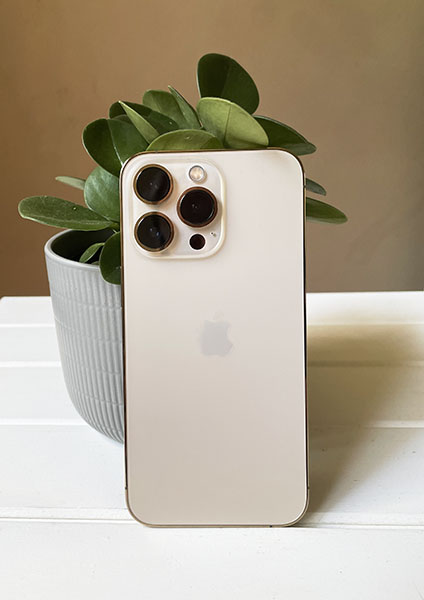
Here are the features and specifications of the iPhone 13 Pro:
- Starting from $1799
- 6.1 inch Super Retina XDR display with ProMotion
- 5G compatible
- 128GB, 256GB, 512GB and 1TB storage sizes available
- A15 Bionic Chip with Neural Engine, 6-core CPU and 5-core GPU
- Up to 22 hours of video playback
- MagSafe and QI wireless charging
- 12MP Triple rear camera set-up with 6x zoom (wide + ultra-wide + telephoto)
- Cinematic mode, Night Mode and Dolby Vision
- 12MP TrueDepth front-facing camera and ProRes 4K video
- Gold, Graphite, Silver and Sierra Blue colourways
| iPhone 13 Pro Pros | iPhone 13 Pro Cons |
|---|---|
|
|
Jump to:
Design and Functionality
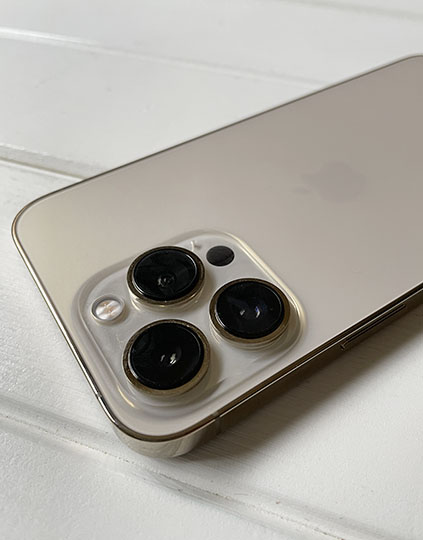 Apple is clearly a stand-out when it comes to design. And it always has been. Apple rarely does anything shocking with the iPhone’s aesthetics, so it’s no surprise that the iPhone 13 series is very similar in design to the iPhone 12 range.
Apple is clearly a stand-out when it comes to design. And it always has been. Apple rarely does anything shocking with the iPhone’s aesthetics, so it’s no surprise that the iPhone 13 series is very similar in design to the iPhone 12 range.
Look and feel
The 13 Pro does look sleek and beautiful, as did the iPhone 12 Pro. But it’s still nothing exciting. While I tested the gold version of the phone, which does have a gorgeous finish, it’s still less than ground-breaking. The only real point of difference to previous Pro iPhones is that you can pick up the iPhone 13 Pro with a nice Sierra Blue finish.
It’s also the same blocky shape as the iPhone 12 series. Which sets it apart from the flatter phones released by other manufacturers. Compared to other phones on the market, the size of the iPhone 13 Pro is rather small. But if you’re not a fan of big phones, then this size should be perfect. As someone with smaller hands, I find the size of the iPhone 13 Pro ticks all the boxes — large enough for a good viewing experience, but small enough that I can easily use it one-handed without issues navigating across the screen.
The iPhone 13 Pro does feel like the premium phone it is — it’s solid and sleek. The textured matte glass on the back looks like it would smudge easily, but it doesn’t. You’re more likely to see fingerprints on the metal casing that wraps around the sides.
It is certainly a chunkier iPhone thanks to the bigger battery. And the camera set-up is likewise much bigger than its predecessor, in order to house those larger lenses. Because the cameras are so bulky, the phone won’t lie flat if you decide to go case-less. The Apple case I was using with the phone had a protective ring around the camera bump, which also prevented the phone from lying flat. If you prefer to lie your phone down flat for certain activities, you might need to make sure you invest in the right phone case.
Screen
The screen is what you’d expect from a premium iPhone — clear, vibrant and gorgeous — thanks to the Ceramic Shield material and Super Retina XDR. Everything looks crystal-clear, whether it’s social media or streaming video. Combined with the new ProMotion, it’s pretty much one of the best-looking screens on a smartphone. The in-screen notch at the top is also smaller (not as wide as previous phones), but if you’re used to the iPhone notch, it’s likely you won’t even notice that it’s smaller.
Overall, you can’t really fault the iPhone 13 Pro when it comes to look and feel. If you’re used to iPhones, it’s a phone that will feel familiar. If you’re switching from a larger-sized device, you might find the size a bit small. But you’ll get used to it.
Performance
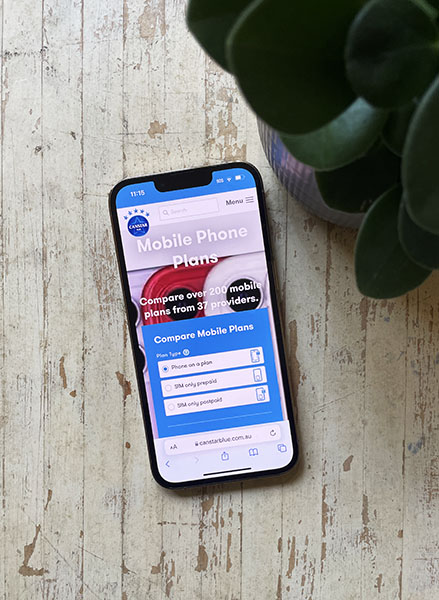 Like all phones in the iPhone 13 line-up, the iPhone 13 Pro includes Apple’s newest chipset. The A15 Bionic Chip with Neural Engine. Of course, when it comes to a powerful processor, Apple is hard to beat.
Like all phones in the iPhone 13 line-up, the iPhone 13 Pro includes Apple’s newest chipset. The A15 Bionic Chip with Neural Engine. Of course, when it comes to a powerful processor, Apple is hard to beat.
Navigation and use
What you get is a smooth and seamless performance — exactly what you would expect of an Apple device at this price point. Facial unlocking is quick and accurate as long as your face is unobstructed by glasses or a mask, and navigating around the phone is easy. Especially if you’re used to iOS.
One small issue I had with the higher refresh rate is the iPhone’s tendency to jitter when you’ve scrolled on a page. As the scrolling is much faster than that of the iPhone 12 Pro, if you let the scroll go and stop on its own, right before it settles down, it will kind of jitter right before it stops. This was most noticeable when scrolling through text and when using Safari. This may or may not be obvious to others, and may not be all that irritating, but it was one thing that stood out for me.
Battery
As for the battery, it is pretty much what you would expect of an iPhone. While it does have improved battery life compared to the iPhone 12 Pro, it still falls behind when compared to other phones. There’s just something about the iPhone battery that feels like it drains more. However, it’s still a decent battery life, and for light or moderate use, you could get away with only needing to charge it every couple of days; for regular and heavy use, you’re looking at a daily charge.
I found that around a couple of hours of moderate usage (social media and music streaming) would use around 4% of the battery. While 37 minutes of streaming HD video used 3% of the battery. Compared to around 19 minutes of HD video streaming on my iPhone 12 Pro using about 3% of the battery, you do see an improvement in battery performance from the 13 Pro.
Charging is quite slow though if you’re using the included cord plugged into a laptop or an older charging cable, taking over two-and-a-half hours to get from 0% to 100%. If you’re upgrading to this phone from a much older phone, keep in mind that Apple only gives you a lightning to USB-C charging cable, without any wall plug included.
Viewing experience
The screen is vibrant, bright and, true to iPhones. It provides a fantastic viewing experience, whether you’re scrolling through social media, gaming or streaming video. Not only does the screen make everything look amazing, but the sound performance is great, thanks to the front and bottom speakers. One of my favourite things about iPhones is that you can use the speakers without sacrificing audio quality. When you combine the stunning screen and dynamic speaker performance, you get a device that you can easily use without headphones, and still get a fantastic viewing or listening experience.
Overall the iPhone 13 performs as you would hope it would. It’s fast and seamless and excellent for watching videos and any other day-to-day usage. If you’re a moderate to the heavy phone user, a daily charge will be required, while light users might be able to survive a couple of days on a single charge.
Cameras
Apple’s iPhones are known to be pretty much the pinnacle of smartphone cameras. While they never seem to have the gimmicks or flashy modes that Android devices might, Apple has always been that quiet achiever — getting the best results without making a big fuss.
But, when it comes to the cameras for the iPhone 13 Pro, I have one word — macro.
As an avid amateur photographer, this is the feature I’ve been waiting for in an iPhone. While Android devices have had macro lenses for years, even in the most basic smartphones, Apple has been noticeably absent from the macro party. Now, finally, you can get that quality smartphone camera experience Apple is known for, combined with close-up photography to create some stunning shots.

If this is a feature that matters to you, you will need to pick up the iPhone 13 Pro or 13 Pro Max to access it. As Apple has not included it with the 13 or 13 Mini. But, that’s to be expected as the camera set-up has been one of the things that set the Pro version apart from the flagship.

However, macro isn’t perfect on the iPhone 13 Pro. Rather than including it as a mode that you can choose to enable or not, it will automatically switch lenses (from the main to the ultra-wide) the closer you get to a subject. You can see this happen quite clearly if you hold the phone away from the subject and then move it in closer to the subject — you’ll see a little flicker as it changes lenses, and your subject matter might move its position on your screen.

I found this really frustrating at times. When trying to photograph a particularly small subject in mildly windy conditions, the camera wouldn’t focus on what I was trying to take a photo of at all, and I did find it to be sometimes temperamental when it came to focusing on the subject. However, Apple is looking into releasing an update with the option to toggle macro off and on, which would definitely solve a lot of these issues.
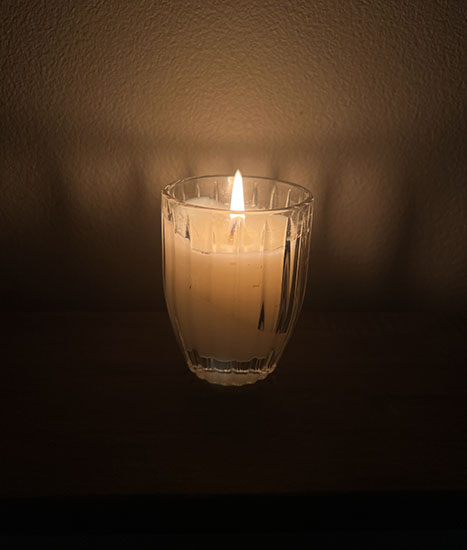
Like you’d expect, night and low-light photography look great. But, is still susceptible to the flaring issue seen on other iPhones, including the 12 series. Details picked up in low-light settings are quite impressive, and even macro works well in low-light.

You’ll get an amazing all-round photo-taking experience from the iPhone 13 Pro. Whether it’s a panorama, outdoors, indoors, wide-angle — Apple is really in a class of its own and very reliable. It also has one of the most natural-looking portrait modes around. Many Android phones, especially the cheaper ones, tend to struggle getting that background bokeh effect to look natural, but this is something Apple has pretty much perfected.
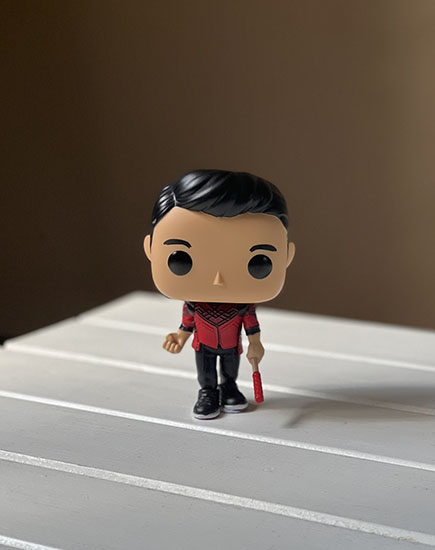
Video modes include slow motion, time lapse and the new Cinematic mode. Cinematic mode combines that background blur technology used in portrait photography, to create dynamic videos with natural-looking focus. I found the feature to be a little temperamental, and one issue with relying on automatic focus is that you are at the mercy of the technology working for you. It takes a fair bit of practice to get this mode working as it should. And even then, you might find something interferes with it and you have to try again. Realistically though, this is a feature that might not be used much by the average iPhone user. It’s fun to play around with, but it’s unlikely you’ll use it regularly.

Overall, there isn’t really much you can complain about from the iPhone 13 Pro cameras. While there are some things that need work, it’s still probably one of the best camera set-ups available in a smartphone. Despite the MP being lower than many Android devices on the market, Apple does prove that when you have quality technology and a great camera app to back up the lenses, there’s very little that your phone can’t do.
Should I buy the iPhone 13 Pro?
If you’re used to iPhones, the sort of upgraded experience you’ll get from the iPhone 13 Pro is hard to beat. Even if you’re upgrading from a device in the iPhone 12 series, you’ll still feel the difference with the 13 Pro.
The biggest barrier with the iPhone 13 Pro is, of course, the price. This device doesn’t come cheap, with prices starting at $1,799 for the 128GB model, and going up to $2,799 for the 1TB model.
If the price of this phone isn’t an issue for you, or you’re planning on picking it up on a phone plan, then it is hard to find a better device than the iPhone 13 Pro. If you’re an iPhone user looking for an upgrade, this phone will have all the bells and whistles you’re after.
However, if you’re a simpler iPhone user, you might be content with the iPhone 13 (or iPhone 13 Mini). This device is called Pro for a reason: the higher refresh rate, addition of macro photography, the bigger battery and the textured matte glass finish on the back set it apart from the iPhone 13. So if these additional features don’t really mean much to you, you’d be better off saving the money and going with the standard phone.
If you want the absolute best of everything, and you’re big on your phone photography, the iPhone 13 Pro is the best camera system in an iPhone to date. If you want to up your phone-tography game, you can’t really go wrong with the 13 Pro. And you’ll have a lot of fun playing around with it, too.
| Consider the iPhone 13 Pro if | Don’t consider the iPhone 13 Pro if |
|---|---|
| You’re upgrading from the 11 series or older and want the best features and best camera set-up Apple can offer. | You have an iPhone 12 series phone or need an upgrade, but aren’t fussed about macro or ProMotion refresh. |
Compare phone plans with Canstar Blue
While the bones that make up your phone matter, the phone plan you’re on makes all the difference in getting the most out of your phone. If you are constantly running out of data or calling minutes, and having to top up with expensive bonuses, it’s probably time to look at changing. At Canstar Blue we make it easy by comparing a range of phone plan providers. To get started, just click the button below.
Compare mobile plan providers with Canstar
Product used for review/testing was a free sample provided by Apple.


Share this article